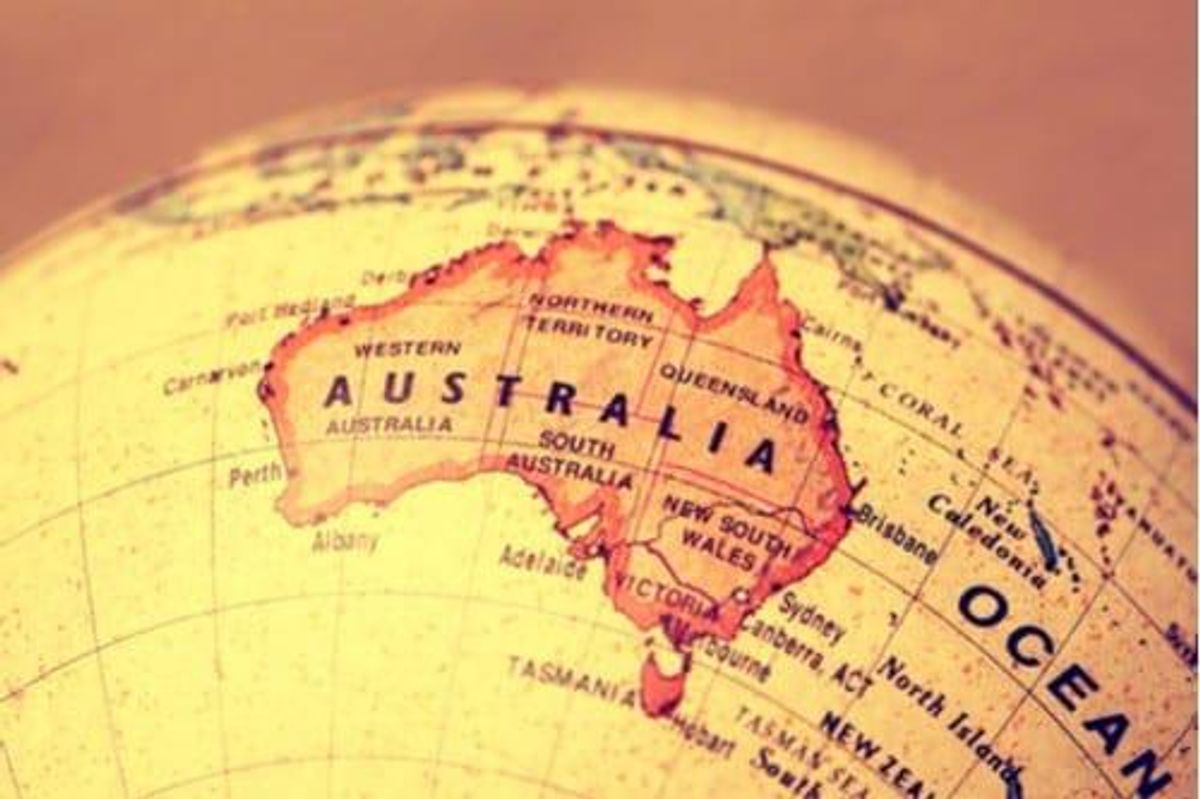How to Access Medical Cannabis in Australia
Cannabis is used to treat illnesses, but federal legislation has a strict hold on how people can access medical cannabis in Australia.

Recreational cannabis remains out of reach in Australia, but the country legalised medical cannabis in 2016, opening up access to the cannabis market for both Australians and investors alike.
Cannabis in Australia is used to treat myriad conditions, from epilepsy to neuropathic pain, but federal legislation has a strict hold on the distribution of cannabis in the country.
Patients can only receive medicinal cannabis products via a specialist and then may have to wait up to a month for government approval. However, there are signs that the limits to access are slowly lessening, including the approval of over-the-counter cannabidiol (CBD) products and new breakthroughs in government-sponsored medical cannabis research.
Here the Investing News Network (INN) takes a look at how to access medical cannabis in Australia, plus the challenges facing the country’s patients and what it all means for the budding Australian cannabis industry.
Access to medical cannabis in Australia: The history
Cannabis was first outlawed in Australia in 1938 in the midst of a moral panic. The uproar was ignited by a story in an Australian newspaper that was authored by the US Bureau of Narcotics — it referred to marijuana as “a new drug that maddens victims.” This story, written by John Lawrence Jiggens, failed to stifle marijuana use, and in fact, in the 1960s, usage of the substance increased; this was an international phenomenon, observable in the hippy movement in the US.
The “war on drugs” ramped up in the Oceanic country decades later in the 1970s amid US-style drug prohibition, and communes in Queensland and New South Wales faced paramilitary raids.
Over the years, Australia’s relationship with the drug has been complex. Cannabis use has remained fairly high despite it being illegal.
In 2016, the drug’s status changed when Australia’s parliament amended the Narcotic Drugs Act 1967 to allow the cultivation of cannabis for medicinal and research purposes.
The amendment came into action exactly a year after medical cannabis campaigner Dan Haslam died after being diagnosed with bowel cancer. Haslam used marijuana to ease his pain and nausea before he died. His mother went on to create a medical cannabis advocacy group, Unite in Compassion, that petitioned the government to make the drug legal.
When the amended act was being passed, Haslam’s story was brought up as an example of the kind of patient that counts on cannabis as a pain aid.
“It is incredibly fitting that today we are passing this bill which is one step towards making medicinal cannabis accessible to people like Dan,” Australian Senator Richard Di Natale said before parliament.
Access to medical cannabis in Australia: How to access
Medical cannabis in Australia is overseen by the Therapeutic Goods Administration (TGA) and the Office of Drug Control, both of which are part of Australia’s Health Products Regulation Group under the Australian Government Department of Health.
The TGA is the country’s regulatory authority for ensuring the safety and quality of therapeutic materials, including medicine and medical devices. The Office of Drug Control issues three types of cannabis licences: research, manufacturing of a drug or product and cultivation or production of medical cannabis. As of September 2022, a total of four companies hold research licences, 32 companies hold cannabis cultivation or production licences, and 13 companies hold both kinds of licence: research and cultivation.
Medical cannabis products in Australia are only available for specific patient groups under medical supervision, and are subject to stringent security and quality control measures.
Patients can access products such as cannabis flower, oils, liquid sprays and topical treatments via import from Canada or the US or from local sources. But these items can only be prescribed by a registered medical practitioner after a thorough assessment to determine if medical cannabis is right for the patient.
Patients seeking access to medical cannabis products in Australia can do so through the Special Access Scheme (SAS), the Authorised Prescriber (AP) Scheme or a clinical trial.
The SAS provides a route for medical professionals and their patients to gain access to normally unapproved medicine with government permission. An AP is a medical practitioner who has already been approved by the TGA to prescribe unapproved medical goods and doesn’t need further permission.
The TGA has approved SAS applications for ailments including chemotherapy-induced vomiting, paediatric epilepsy, cancer pain and spasms from neurological conditions.
But SAS approval doesn’t guarantee access to medical cannabis — that falls to the medical practitioner and the patient. If a doctor sees fit to prescribe medical cannabis products to a patient, they must do so under state or territory laws. These laws can vary and can affect whether or not medical cannabis can be prescribed. INN’s state-by-state guide to cannabis in Australia offers investors a more in-depth look at these jurisdictional variances in medical cannabis regulations.
That said, there have been efforts to streamline the SAS application process. In June 2018, the TGA set up an online system to lodge SAS applications, replacing the old paper form system, and it has been working with the health departments of Australia’s states and territories to make application easier for patients.
Patients looking to secure access to medical cannabis can also seek out an AP or submit an online form for an AP as well, expediting the application process. As of March 2022, there were 903 APs in Australia, up from the 56 reported in June 2019 and 263 in June of 2021 — a clear sign that access to medical cannabis in Australia is on the rise, even exponentially so. The archived page also shows a marked increase in monthly category B approvals. Category B refers to access to controlled substances through APs where patients do not qualify for category A; category A is for patients who are severely — including terminally — ill.
There must also be clinical trials for the use and study of unapproved goods. When a trial involves cannabis, the products used have to meet the quality standards the TGA has established.
Access to medical cannabis in Australia: The difficulties
While Australia’s budding cannabis industry is well regulated, its tight restrictions and lengthy application process have caused problems for patients seeking access to medical cannabis in Australia. The process is designed to find people who truly need medical treatment and weed out those who are seeking cannabis for recreational purposes or personal use.
Additionally, according to some Australian members of parliament, some physicians are hesitant or outright unwilling to prescribe cannabis due to a lack of cannabis clinical trials. It has led to some apprehension around the safety and efficacy of the drug.
However, there is hope on the horizon as new government-supported cannabis research is underway. In July 2021, the Hemp Gazette reported that scientists from Agriculture Victoria Research had developed the world’s most complete medicinal cannabis genomic reference. Under a federal cannabis research licence, the scientists used genomic DNA testing to extract genetic information and build a database based on a variety of medical cannabis strains found worldwide.
This medicinal cannabis genomic reference guide benefits the Australian medical cannabis market in a number of ways. For one, it provides critical information for cannabis cultivators, including the “growth rates, bud size, cannabinoid profile and disease resistance of specific strains.” For medical professionals and patients, the information will help match strains for the treatment of specific conditions. At the compliance and regulatory level, the database will improve the efficiency and cost-effectiveness of product testing.
“Victoria’s cultivation trial has not only made medicinal cannabis available to patients but has also provided our world-leading scientists with important genetic information to design more effective products,” said Mary-Anne Thomas, Victoria’s minister for agriculture.
In another sign that Australia’s medical cannabis market is opening up, the TGA updated its medicinal cannabis policy in February 2021, moving CBD from Schedule 4 (prescription only) to Schedule 3, permitting over-the-counter sales at any pharmacy. Given the very strict metric of quality, it will be some time before such products make it to market.
However, these strict standards for medical cannabis products are expected to be good for the Australia-based medical cannabis industry in the long run, especially when it comes to exports to global markets. The Australian government has permitted the country’s cannabis manufacturers to export medical cannabis and its products to the global market since January 2018.
“The TGA has one of the highest standards in the world, and combined with our scientific prowess as a nation, it puts Australia in a prime position to compete in quality and scale,” said Angus Chapel, founder and CEO of Medibis Australia. The private firm is building a cultivation facility in Toowoomba and has partnered with BOL Pharma, an Israel-based cannabinoid pharmaceutical company, to launch cannabis medicines in Australia.
Access to medical cannabis in Australia: Investor takeaway
Despite the hurdles facing patients who use cannabis, projections for Australia’s medical cannabis market are favourable. A report by FreshLeaf Analytics, published in the first half of 2021, predicted that by the end of that year, the medical cannabis market in the country would be worth AU$200 million. The research firm cited the growing number of patients and authorised prescribers, better product selection, emphasis on product quality and growing investment in research and development as supporting factors. In the second half of the year, FreshLeaf had already raised that prediction by 15 percent to AU$230 million.
Registered patients in Australia totalled around 45,000 in March 2021, up from 30,000 patients at the end of 2020 and 3,000 patients in 2019. The firm also notes that the number of available products has doubled yearly since 2018. The number of prescriptions is increasing at an ever-accelerating rate. In six months’ time, from July 2021 to January of 2022, prescriptions boomed from 150,000 to 248,000.
Although still in its early stages, Australia’s medical cannabis industry is moving in the right direction despite the challenges. As it grows, Australia’s cannabis space will continue to be of interest for investors as companies expand their reach through international sales and through research products that may help demystify the effects of the drug.
For more insight on the investment opportunities in Australia’s medical cannabis market, check out INN’s 10 ASX Cannabis Stocks and Australia Cannabis Investing: What You Need to Know.
This is an updated version of an article first published by the Investing News Network in 2019.
Don’t forget to follow us @INN_Australia for real-time news updates!
Securities Disclosure: I, Ryan Sero, hold no direct investment interest in any company mentioned in this article.

